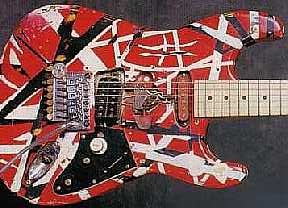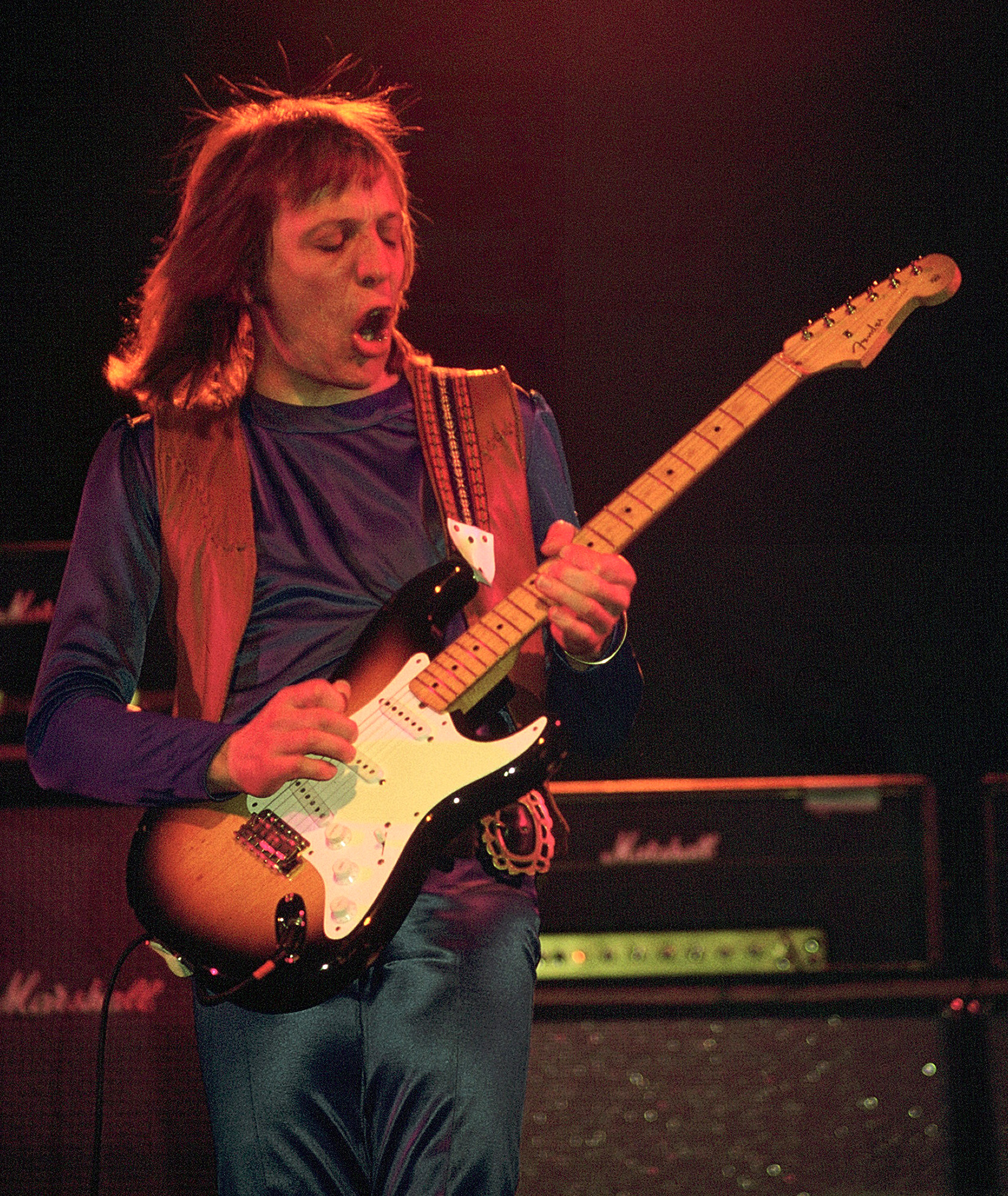|
MXR Phase 90
The MXR Phase 90 is a phaser effects pedal introduced in 1972 by MXR. History The Phase 90 was the first pedal sold by MXR and helped launch the company in 1974. The original model had a simple orange enclosure with a script style MXR logo. In 1977 MXR changed its logo to a block style. There was a transitional period in which some Phase 90s with script logos had box logo circuits, and vice versa. Production ceased when MXR went bankrupt in 1984. When Jim Dunlop bought the MXR brand, production resumed. The Dunlop models have an LED to indicate the effect is engaged, and an optional AC power supply. There are several styles, including the standard block logo version, a reproduction of the script logo version, and an Eddie Van Halen signature model. Van Halen first heard Robin Trower use the pedal in the mid-1970s, and used it on songs such as " Eruption", "Atomic Punk ''Atomic Punk'', released in Japan as and in Europe as ''Dynablaster'', is a video game released for ... [...More Info...] [...Related Items...] OR: [Wikipedia] [Google] [Baidu] |
Phaser (effect)
A phaser is an electronic sound processor used to filter a signal, and it has a series of troughs in its frequency-attenutation graph. The position (in Hz) of the peaks and troughs are typically modulated by an internal low-frequency oscillator so that they vary over time, creating a sweeping effect. Phasers are often used to give a "synthesized" or electronic effect to natural sounds, such as human speech. The voice of C-3PO from ''Star Wars'' was created by taking the actor's voice and treating it with a phaser. Process The electronic phasing effect is created by splitting an audio signal into two paths. One path treats the signal with an all-pass filter, which preserves the amplitude of the original signal and alters the phase. The amount of change in phase depends on the frequency. When signals from the two paths are mixed, the frequencies that are out of phase will cancel each other out, creating the phaser's characteristic notches. Changing the mix ratio changes th ... [...More Info...] [...Related Items...] OR: [Wikipedia] [Google] [Baidu] |
Effects Pedal
An effects unit or effects pedal is an electronic device that alters the sound of a musical instrument or other audio source through audio signal processing. Common effects include distortion/overdrive, often used with electric guitar in electric blues and rock music; dynamic effects such as volume pedals and compressors, which affect loudness; filters such as wah-wah pedals and graphic equalizers, which modify frequency ranges; modulation effects, such as chorus, flangers and phasers; pitch effects such as pitch shifters; and time effects, such as reverb and delay, which create echoing sounds and emulate the sound of different spaces. Most modern effects use solid-state electronics or digital signal processors. Some effects, particularly older ones such as Leslie speakers and spring reverbs, use mechanical components or vacuum tubes. Effects are often used as stompboxes, typically placed on the floor and controlled with footswitches. They may also be built into gu ... [...More Info...] [...Related Items...] OR: [Wikipedia] [Google] [Baidu] |
Jim Dunlop
Dunlop Manufacturing, Inc. is a manufacturer of musical accessories, especially effects units, based in Benicia, California, United States. Founded in 1965 by Jim Dunlop Sr., the company grew from a small home operation to a large manufacturer of music gear. Dunlop has acquired several well-known effects pedal brands, including Cry Baby, MXR and Way Huge. Background and history Scottish immigrant Jim Dunlop founded the Jim Dunlop Company in 1965 as a part-time business while working as a processing and chemical engineer at Barr and Stroud in Glasgow. He was an apprentice of creator of the first hip replacement, William "Bill" Wallace. His first product was the Vibra-Tuner, a small device that attached to a guitar with a suction cup and displayed whether the guitar was in tune with the vibration of a small reed. While visiting music stores to sell his new product, someone told him that musicians needed a good capo, remarking that anyone who made a good capo that could han ... [...More Info...] [...Related Items...] OR: [Wikipedia] [Google] [Baidu] |
Alternating Current
Alternating current (AC) is an electric current which periodically reverses direction and changes its magnitude continuously with time in contrast to direct current (DC) which flows only in one direction. Alternating current is the form in which electric power is delivered to businesses and residences, and it is the form of electrical energy that consumers typically use when they plug kitchen appliances, televisions, fans and electric lamps into a wall socket. A common source of DC power is a battery cell in a flashlight. The abbreviations ''AC'' and ''DC'' are often used to mean simply ''alternating'' and ''direct'', as when they modify '' current'' or '' voltage''. The usual waveform of alternating current in most electric power circuits is a sine wave, whose positive half-period corresponds with positive direction of the current and vice versa. In certain applications, like guitar amplifiers, different waveforms are used, such as triangular waves or square waves. ... [...More Info...] [...Related Items...] OR: [Wikipedia] [Google] [Baidu] |
Eddie Van Halen
Edward Lodewijk Van Halen ( , ; January 26, 1955 – October 6, 2020) was an American musician and songwriter. He was the guitarist, keyboardist, backing vocalist, and primary songwriter of the rock band Van Halen, which he co-founded alongside his brother Alex Van Halen in 1972. Van Halen is often regarded as one of the greatest guitar players in rock history, and was well known for popularizing the tapping guitar technique, allowing rapid arpeggios to be played with two hands on the fretboard. Early life Edward Lodewijk Van Halen was born in Amsterdam on January 26, 1955, the son of Jan van Halen and Eugenia (née van Beers). His father was a Dutch jazz pianist, clarinettist, and saxophonist, while his mother was an Indo (Eurasian) woman from Rangkasbitung on the island of Java in the Dutch East Indies. The family eventually settled in Nijmegen, Netherlands. After experiencing mistreatment for their mixed-race relationship in the 1950s, the parents moved the family t ... [...More Info...] [...Related Items...] OR: [Wikipedia] [Google] [Baidu] |
Robin Trower
Robin Leonard Trower (born 9 March 1945) is an English rock guitarist who achieved success with Procol Harum throughout 1967–1971, and then again as the bandleader of his own power trio known as the Robin Trower Band. Biography Robin Trower was born in Catford, London, England, and grew up in Southend-on-Sea, Essex. In 1962, he formed a band that became the Paramounts, later including Westcliff High School pupil Gary Brooker. The Paramounts disbanded in 1966 to pursue individual projects. During this time, Trower created a local three-piece band called the Jam (not to be confused with the later group with Paul Weller). Trower then joined Brooker's new band Procol Harum following the success of their debut single "A Whiter Shade of Pale" in 1967, remaining with them until 1971 and appearing on the group's first five albums. Before launching his eponymous band, he joined singer Frankie Miller, ex-Stone the Crows bassist/singer James Dewar, and former Jethro Tull drummer Cli ... [...More Info...] [...Related Items...] OR: [Wikipedia] [Google] [Baidu] |
Eruption (instrumental)
"Eruption" is a guitar solo performed by Eddie Van Halen and the second track from Van Halen's self-titled 1978 debut album. It is widely considered one of the greatest guitar solos of all time, having popularized tapping. It segues into a cover of the Kinks' " You Really Got Me", and the two songs are usually played together by radio stations and in concert. The song was later included as the B-side to the group's second single, " Runnin' with the Devil". Composition and recording "Eruption" starts with a short accompanied intro with Alex Van Halen on drums and Michael Anthony on bass. The highlight of the solo is the use of two-handed tapping. "Eruption" was played on the Frankenstrat, with an MXR Phase 90, an Echoplex, a Univox echo unit and a 1968 Marshall 1959 Super Lead tube amp. The Sunset Sound studio reverb room was also used to add reverb. The Frankenstrat was tuned down a half-step. "Eruption" begins in the key of A flat and ends on an E flat note that is a ... [...More Info...] [...Related Items...] OR: [Wikipedia] [Google] [Baidu] |
Atomic Punk (Van Halen Song)
''Atomic Punk'', released in Japan as and in Europe as ''Dynablaster'', is a video game released for the Game Boy in 1990 by Hudson Soft, as part of the ''Bomberman'' series. It was the first game of the series to be released on the Game Boy. There are four modes of gameplay in ''Atomic Punk'', including two single player modes and two multiplayer game modes. Irem also released the first ''Bomberman'' arcade game and its sequel under the ''Atomic Punk'' name. Game A Gameplay in the first mode, "Game A" (known as "Bomber Boy" in the Japanese version) is similar to other games in the series, with a few differences. Power-ups, known as ''panels'', which are usually gained in each level and carried over from one to the next, can also be bought from a store by using GP, which is collected depending on how much time it takes to complete a level and how many blocks are destroyed. At the beginning of each round, the player decides which panels to use to complete the round. Another ... [...More Info...] [...Related Items...] OR: [Wikipedia] [Google] [Baidu] |
Everybody Wants Some!! (song)
"Everybody Wants Some!!" is a song by the American hard rock band Van Halen it is the second track off their 1980 album ''Women and Children First.'' It is one of the band's most popular songs, starting as a concert highlight throughout the band's early career. Chuck Klosterman of Vulture.com ranked it the 36th-best Van Halen song, writing that "Roth’s improvised rap is lascivious and fetishistic." Composition The song is rife with experimental features including a "jungle" drum and Tarzan-like vocal introduction and some new guitar playing techniques from guitarist Eddie Van Halen. The drum-vocal interlude or breakdown section has an improvised feel, with Roth ad-libbing conversational dialogue; for example, he begins the section by saying “I like…” before being cut off by Eddie striking a guitar chord, then finishes "I like the way the line runs up the back of the stockings". At the very end of the song, Roth quips, "Look, I'll pay you for it, what the fuck?" The last ... [...More Info...] [...Related Items...] OR: [Wikipedia] [Google] [Baidu] |


-2.jpg)

